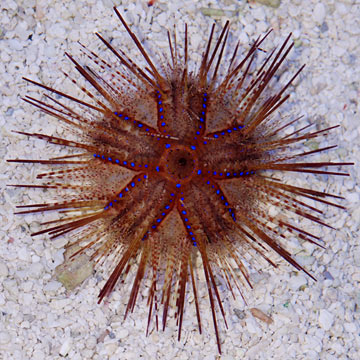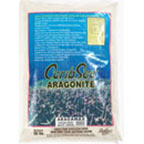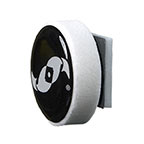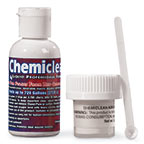
Additional locales and sizes may be available!
Additional locales and sizes may be available! Email me when availableQuick Stats
What do these Quick Stats mean? Click here for more information
What do these Quick Stats mean? Click here for more information
Overview
The Blue Spot Longspine Urchin makes an excellent algae controller for an aquarium housing aggressive fish. Provide an aquarium with ample hiding places and room to roam. The rock formations should be sturdy, since the Urchin could dislodge rocks as it moves around the tank. Being a nocturnal creature, the Blue Spot Longspine Urchin will hide during the day and only come out at night to forage for food.
When approached by most fish, these urchins will sense their presence, and will defend itself by directing its spines towards its offender. In the wild, these urchins sometimes provide shelter to a variety of other organisms including commensal shrimp, crabs, and cardinalfish that find solace from predators within the urchins' spines during daylight hours.
It is very sensitive to high levels of copper-based medications and will not tolerate high nitrate levels. If it begins to shed its spines, it is a sign of very poor water quality.
Be aware, it is venomous, with its sting being roughly equivalent to that of a bee sting.
The diet of the Lonspine Urchin, Blue Spot should consist of dried seaweed and some animal-based supplemental foods. If an ample food source is not present in the aquarium it may attempt to eat corals.
Approximate Purchase Size: Small: 1" to 2"; Medium: 2" to 3-1/4"; Large: 3-1/4" to 4-1/2"











